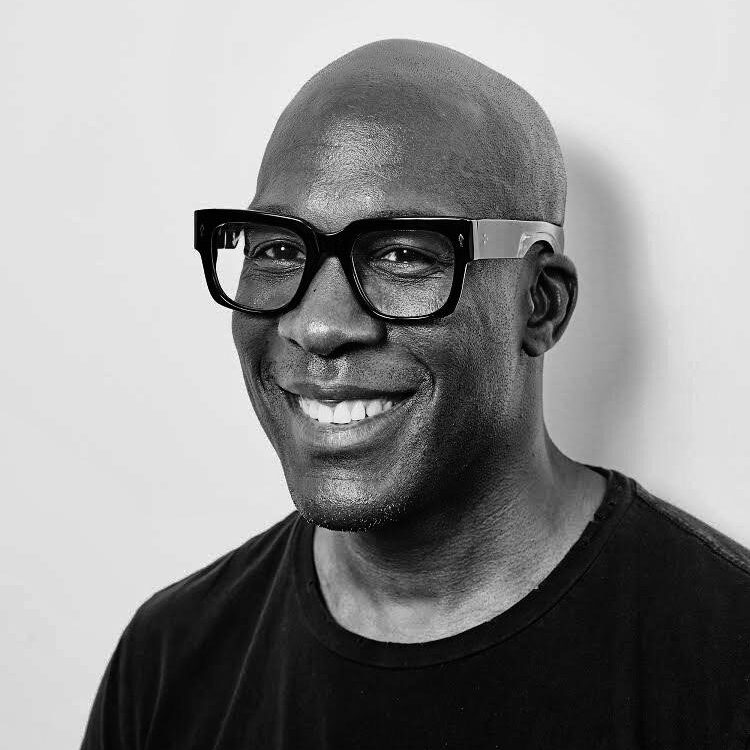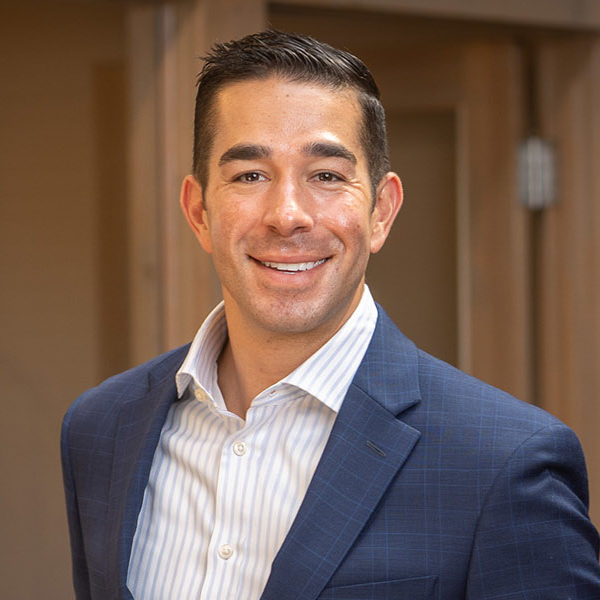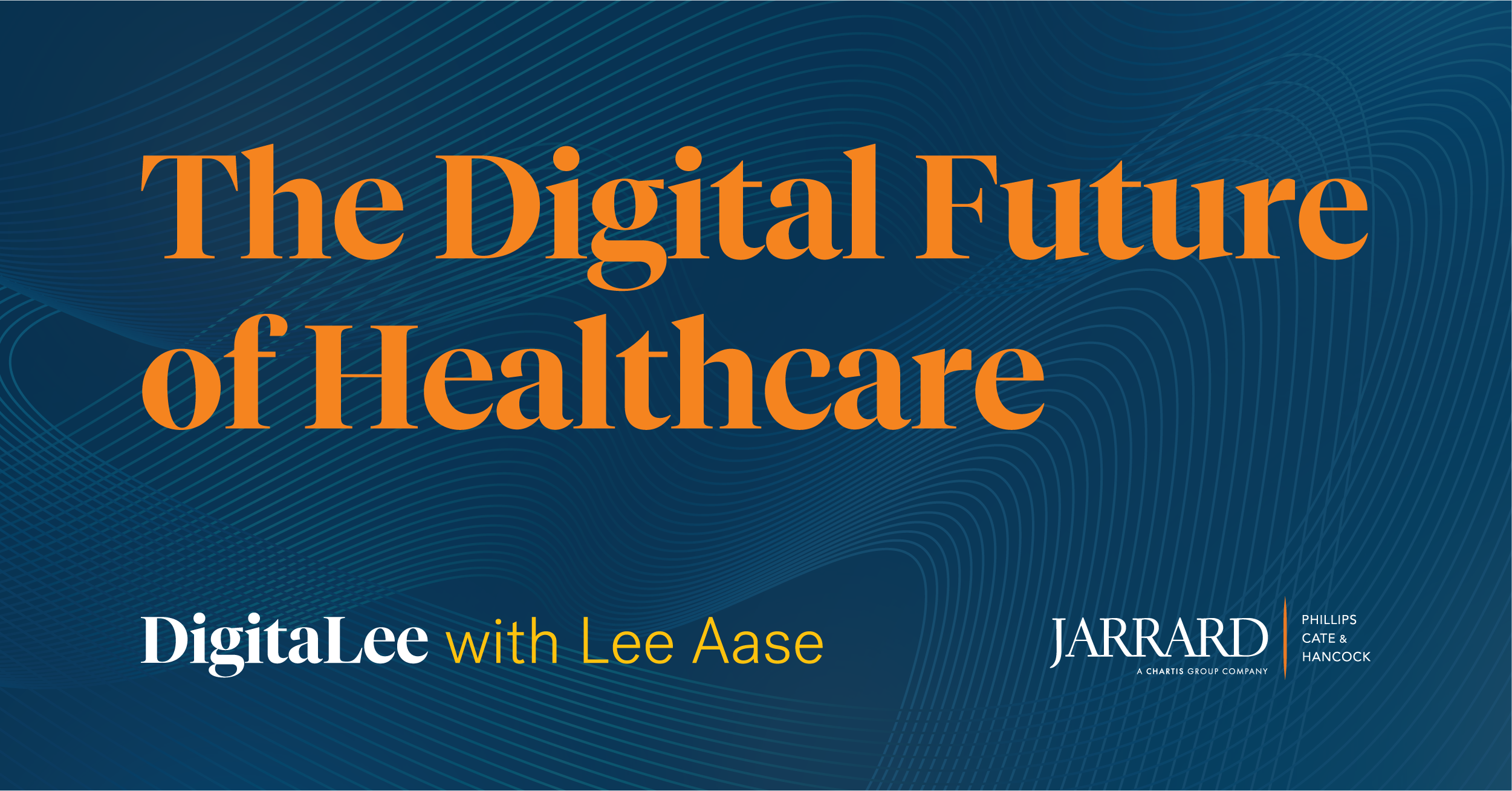

We asked four broad questions to veteran advisors across legal, operations, innovation, digital, strategy, patient experience, marketing and more. Big takes: More of the very Hard Choices healthcare leaders are already navigating…and being ever smarter with the limited resources that remain. Welcome to 2023.
Read through it all, or click on the headshots below to skip right to each expert’s insight.
We asked intentionally broad questions to give each expert latitude to answer based on their own perspective and professional expertise. The diversity of perspective and nuance among responses was clear. And yet, there was dramatic overlap in the themes highlighted by each panelist. That triangulation – seeing similar answers from, say a transaction attorney and a digital expert – points directly to the themes healthcare providers will want to focus on in the new year. Here are those themes.
Note: In January, we’ll share findings from our 5th national survey of healthcare consumer perceptions, touching on many of the themes identified here.
The persistent shortage of healthcare workers was a universal theme. The issue is acute across the care continuum, but particularly challenging at the level of primary care – where pent-up demand is highest and the where the patient journey typically starts.
Full stop. Lower incomes and shrinking margins, along with reduced investment returns, either lead to every other issue or make solving them difficult.
Provider organizations will have to evaluate every investment and partnership. Tradeoffs loom. Health equity and workforce support are necessary – how do resources for those priorities get allocated? It will be a year of frank talk and tough decisions with a fierce need for clear and transparent communication from leadership.
After making hard choices comes taking action on them. Provider organizations can’t cut their way to success. They also need to “actively create what’s next.” That means no favoritism towards legacy solutions and openness to those delivering the highest impact at lower cost. Even if there’s an initial investment in time, money and training.
Or better ones for provider organizations. Whether through M&A, joint ventures or with payers. Though opinions vary on the likely pace of M&A activity in 2023, our panel agrees that mergers, acquisitions and partnerships will continue to make headlines as provider organizations seek the most efficient and sustainable path forward. Financial challenges will also push more productive conversations between providers and payers, perhaps spilling over into collaborative innovation. (One can hope!)
The challenges present an opportunity for transformation of tools and overarching digital strategies. It’s far more than telehealth – which is necessary and no longer a differentiator. Transformation means everything from saving money by reallocating print resources to digital marketing, to allowing patients greater access to their PHI through technology, to evaluating patient usage of mobile apps and improving ADA accessibility on web properties.
It’s part of the patient experience, it’s part of supporting the healthcare workforce, it’s part of fulfilling the mission to care for the whole person. And now, it’s also a business and regulatory imperative with ratings and credentialling agencies using equity as a metric.
This runs the gamut from the tangible – useable digital tools – to the conceptual – full transparency. Patients are looking for convenience to make accessing healthcare easier and more consumerized, ways to expand the front door of primary care, and clarity about how things work in healthcare and what they cost.
The mental health crisis – for the public and for healthcare workers – had been a topic of conversation for years before soaring into view during the pandemic. The issue of addressing people’s needs in a holistic way so they can live well and be productive – and be happy while doing it –remains in 2023.
People like and trust those who deliver care. While they value the role of hospitals and health systems – especially since the pandemic – the highest praise goes to caregivers themselves. However, our experts noted that some people don’t – or would prefer not to – think about their local hospital. And there’s also a just-under-the-surface skepticism about transparency and accessibility efforts, as well as lingering suspicion from days of rampant COVID-19 misinformation. That flashes a yellow light to provider organizations, and should compel them to frequently ask themselves the question, “Is what we’re doing operationally and conveying publicly truly representative of a patient’s experience at our system?”
Want to learn more about the details of each theme referenced above? Here are the responses provided by each panelist.

Workforce and Inflation. The first thing people do when costs rise is put off caring for their own health. Additionally, with all facets of healthcare struggling to keep up with demand, staffing will continue to be one of the most important challenges to tackle.
In terms of staffing, I hope to see better pay and working conditions along with an increase in young people going into the medical fields due to the demand and opportunity for a solid career trajectory. But the U.S. needs to make it a financially viable career path, especially for PCPs, OBs, etc. One major concern regarding staffing is people – who already put off care due to COVID and may be behind in receiving simple wellness checks – not being seen in a timely manner. Additionally, the continued struggle for people to find PCPs who are accepting new patients.
Transparency for patients regarding health records and costs, especially with institutions potentially charging money for sending messages to doctors via patient portals in the coming year. No more excuses for not being able to provide information about cost of procedures. Make that information readily available to patients via patient portals – especially if you are going to start charging to simply answer a patient’s question.
In terms of what’s cooled off, telehealth – it’s expected and offered by everyone and no longer a differentiator. Now, it’s about how you improve upon the experience and make it easier for patients of all ages to receive care remotely.
There is certainly increased trust and respect for the work of hospitals, health systems and the medical field in general. But I think patients, aka consumers, are increasingly frustrated by a system that makes it incredibly difficult to find and receive the care they need in a timely manner along with a complete lack of transparency when it comes to costs for procedures and services. The insurance companies blame the health systems, and the health systems blame the insurance companies, and patients and clinical providers are stuck in the middle. This is something marketers need to especially keep in mind when it comes to communications and marketing materials: Is what you’re conveying truly representative of a patient’s experience at your system?

Inflation, workforce challenges and investment losses dominated 2022. Along with recovering from the pandemic’s impacts on operations, these forces are leading well-positioned hospital systems of all sizes to seek increased scale providing operational, financial and clinical efficiency. Hospital transactions, which have been down since 2019, are roaring back in 2023 as organizations prioritize patient care, quality and access over historic governance structures.
The fragmentation of the American hospital system bears significant responsibility for its high costs and middling quality. Consolidation leads to more profitable hospital systems with higher quality and better patient outcomes. Scale benefits can take time to materialize, especially when the consolidation is the result of a weak organization that delayed partnering as long as possible, but improved quality will be the result of this trend towards larger, more efficient hospital systems.
Multi-region transactions will be a hot topic in 2023. For example, as Advocate and Atrium stated in their merger communications, the Midwest and the MidAtlantic are now adjacent healthcare markets. While the scale benefits of hospital transactions can include in-market clinical and referral synergies, those tend to be secondary to the market-independent structural synergies of best practices, corporate finance, population health infrastructure, purchasing and other synergies. However, to fully realize those benefits, organizations typically need to undergo structural and ownership change, indicating that loose affiliations and other “dip-the-toe-in” partnerships are likely to cool off in 2023.
People are expecting more from their hospital systems. While they trust, appreciate and support their care teams, they are increasingly skeptical of the organizations for which those clinicians work. Layer in front-line labor challenges and patients directly shouldering an increasing share of the healthcare dollar and the frustration becomes palpable. However, the industry remains filled with folks who entered healthcare to help others. Organizations that can build environments where those folks want to work will be successful going forward.

Inflationary pressures (including the cost and access to capital) coupled with skilled labor shortages should be the predominant headwind in 2023. Our practice diligences healthcare services in a broad swath of sectors – big and small – and these trends, unfortunately, continue to worsen as we enter the new year. Perhaps in a distant second is the likely increased regulatory focus that usually accompanies a split Congress.
Unfortunately, there is likely to be some distress followed by restructurings – both in and outside of court. Those acquirers whose balance sheet and operations allow are going to have some compelling M&A opportunities.
The M&A landscape has cooled from a record 2021 and hot 2022 (through Q3). That said, healthcare M&A is nothing if not resilient and, as we know, recession resistant. The march towards value care and innovation through healthcare consumerism are also poised to make some big leaps in 2023 with ‘real’ capital lining up to advance their efforts.
The public values and trusts their physicians and care teams, including their local hospitals. I think there are other players in the healthcare ecosystem that are less trusted, and there are going to be some questions brought to the forefront about how the pandemic was handled in connection with the aforementioned divided Congress. That could exacerbate the shaky footing.

If picking just one thing, it would be a continuing workforce crisis for all our healthcare clients, particularly hospitals and health systems. We simply don’t have enough front-line healthcare providers to meet the demand.
The shortage is causing crippling labor costs, and there’s no significant mitigation of this problem on the horizon. In addition to stripping hospital margins, workforce shortages in key areas will likely continue to drive a shift towards access through digital healthcare platforms.
Again, there should be an uptick in telehealth services and remote patient monitoring. There are some very innovative solutions available that could continue to change the way healthcare is delivered.
Also, expect new rules related to HIPAA and information blocking – healthcare data privacy and security will continue to be huge.
On a different note, it’s tough to ignore what looks to be a continuing crisis in mental health – more people are being impacted, and it’s a continuing need that must be addressed.
Finally, I see a continued trend toward more non-traditional companies getting into healthcare.
Our client hospitals and health systems have rallied public support well in the COVID era and have burnished their reputations as critical community assets. This could be one of the major lasting impacts of COVID – additional well-deserved respect is accorded our local healthcare systems and, in particular, our community healthcare providers.

Workforce development and labor shortages. It is underappreciated how durable the labor disruption will be. Healthcare has not faced a shortage of resources in 50 years and, as such, has not been forced to make hard choices and/or innovate its way into less dependency on human capital.
It will vary between non-profit and for-profit or, perhaps more accurately, between health systems that are prepared for and actively engaged in cost control, including healthcare’s most significant input, labor. The only answer, ultimately, will be innovation – particularly that which saves time. In the near term, there are likely to be reductions in service lines, backlogs of cases and even reduced access. Ongoing labor disputes are also likely.
The most important trend we see that will aggravate labor and workforce issues is payer conflict. That will probably lead to more health system consolidation, about which the FTC will have fewer arrows in their quiver than they would like. Ultimately, health systems that control their markets will be price setters, and that is the direction many will head.
The public generally supports their doctors and, to a certain extent, the dominant hospital in their region. However, that trust is eroded by a lack of transparency on price and, often, quality. Payer conflicts with employer plans are going to drive even more people into high deductible plans where price really matters as most people become cash payers.


Workforce/labor in every way imaginable – cost structure, retention, burnout, training/development, pipeline, staffing models – has to be put at the top of the list right now. This was mentioned in last year’s predictions for 2022 and it carries forward into 2023.
Another force to highlight is the ever-expanding world of partnerships and M&A activity beyond traditional hospital-to-hospital transactions. Hospital transactions are still a big part of the landscape as we move into 2023, but we are seeing a wider variety of joint ventures and other arrangements in areas such as ambulatory access, digital health, high-reliability care, health equity and payer/health plan products. Our clients are investing heavily in partnerships that fortify their presence across the ambulatory ecosystem surrounding their hospitals.
One anticipated change from workforce challenges will be the continued evolution of new care delivery arrangements including alternative sites and care models. The advancement of digital and key strategies such as Hospital at Home are part of the solution.
We will continue to see health systems focus on building scale and capabilities outside of the traditional hospital component of the healthcare ecosystem. They will not be short of options and partners in this effort, but the challenging economy and limitations to accessing capital will determine how extensively and quickly many organizations collaborate.
All of the areas mentioned above will continue to be hot throughout 2023. In addition, health equity, digital health and programs/models that truly integrate care financing and delivery (especially with managed governmental payer lives) will continue to be top of mind in 2023.
In general, opportunities that are capital intensive and have a long time to market or realization of value have cooled off.
In many ways, the pandemic has fortified the trust that patients have for their providers and health systems. There is considerable admiration for all that providers have done to help us through the pandemic. At the same time, as traditional aspects of inpatient care melt to ambulatory settings and as ambulatory care melts to virtual and at-home settings, the need to expand the health system footprint to offer easy access across the continuum of care is greater than ever.

Digital transformation, which will include affordability and accessibility, particularly with underserved and rural communities.
It would help to close the digital divide. If we can start to think about better broadband access for the most vulnerable, we begin to close that divide. This would also allow more access to high-speed internet for educational and entrepreneurial uses.
The trend of care centers specializing in wellness has cooled off. A lot of them never differentiated themselves enough to make strong strides in the marketplace. My hope is that we get back to basics. I don’t need fancy couches and cappuccinos in the waiting room, I just need good, affordable healthcare.
There’s a lack of trust. I think COVID really exposed the misalignment of info. We’re at a place now where we don’t necessarily know which source to trust. But we’re now dealing with fear-driven policies that are forcing individuals and families to make tough decisions. We need people-centered policies that support healthy outcomes for all.

The workforce is the primary force that will drive healthcare next year. The needs of physicians, nurses and employees should serve as the North Star for all healthcare systems if they want to weather the financial headwinds and be successful. Without a healthy healthcare workforce, there’s no ability to deliver care. There’s no ability to realize and drive innovation. There’s no way to create healthier communities and improve the healthcare system.
It’s not one big change that will solve the workforce issue. Rather it will require HR, Operations, Communications and other areas working together to create a culture where people want to stay and where top talent wants to come to work. There’s a real need for health systems to solve for burnout, address recruitment and turnover issues, find ways to unlock the full potential of the resources they have and create a culture that is rooted in inclusivity and belonging. Not to mention, a reimagined strategy for how they communicate and connect with their workforce. These are the changes that need to happen to build a sustainable workforce and will be the most important work for healthcare organizations next year.
Beyond the workforce, there will be a heightened focus on financial improvement initiatives, including labor and non-labor expenses, patient access and acquisition and health equity. In a sea of strategic priorities, health equity has not been at the top of that list. But with this year’s release of CMS’s framework for health equity and US News & World Report’s unveiling their health equity methodology – not to mention the healthcare disparities and inequities that were illuminated and worsened by the COVID-19 pandemic – it will be interesting to see if health systems finally address this issue and start investing in it.
Honestly, I don’t think the average patient or consumer pays a lot of attention to their local hospital or health system. Especially if they don’t have ongoing healthcare needs. Sure, they trust their provider. But beyond that, how often are they thinking about and engaging with their clinician’s organization? I would wager very little. I think people also view the healthcare system as wildly inefficient, costly and confusing. If we truly want to improve the health of communities and solve some of the underlying causes of our unhealthy nation, provider organizations need to be collaborating with their communities and addressing social determinants of health. Maybe then, patients and consumers will start to see hospitals and health systems in a more positive, visible light – as a place that helps you be well and takes care of you when you’re sick.

“Financial headwinds” will be the primary force and continue to exert outsized pressure on healthcare in 2023. These headwinds, which collectively include things like increased labor costs, inflation, access to capital, reimbursement, and so on, make it challenging for health systems and other industry players to execute on more strategic and innovative strategies. Notwithstanding that, collective demand for improved performance across the industry remains high, which will require health industry players to evaluate their portfolios, geographies and partnerships to enable improved ability to provide accessible, high-quality care to the patients and communities they serve.
With every challenge comes an opportunity, so these financial pressures are motivating organizations to move more quickly on strategies across the care continuum. This pressure will hopefully result in innovations to address a lot of pain points providers are currently experiencing, from labor force to patient experience to cost management. We’ll see a lot of healthcare organizations looking beyond their own four walls to outside collaborators to harness the power of their own data, work more efficiently and develop solutions that “work smarter, not harder.”
Even as the economy presents challenges, expect healthcare mergers and acquisitions to continue in the year ahead. For those in the position to buy, this opens the door to acquiring distressed assets or consolidating with others. For others, portfolio reassessment will result in divestitures or joint ventures of assets that organizations no longer feel compelled to wholly own and operate.
What has not cooled off is the conversation about workforce wellness, as providers and staff remain stretched. That conversation should continue as there is no substitute for nurses, doctors and those on the front lines in caring for the population, even when that care is becoming more virtual in some instances.
We’ve certainly learned over the past several years that healthcare workers and healthcare organizations are essential. While patients may have trust in their individual providers and maybe even their local hospital or health system, there is great dissatisfaction with the incredibly complicated puzzle of providers, payers, pharmaceuticals and the sources of healthcare funding. The increased focus on well-care and not sick-care will enable different engagement between consumers and the health care system, which raises the prospect of a healthier health system for all.

Workforce/labor will continue as a singular challenge for healthcare systems and providers. It adversely impacts access to care, quality of care and financial well-being of organizations. Many hospital systems will still not be able to open all their licensed beds due to the inability to staff them.
Within the sizeable group of hospitals that already operated at single-digit or negative margins, many will seek to consolidate with other systems or dramatically restructure. I’m optimistic that for hospital systems that have proactive and engaged leadership, this dynamic will lead to innovation in delivery models and technology – perhaps even in collaboration with payers and employers.
Payers, providers and investors continue to focus on delivery models and technology that allows healthcare to be delivered at home or otherwise outside the hospital or physician office. Consumerism and “bending the cost curve” will drive this trend through 2023 and beyond. Provider organizations will increasingly assume financial risk, and payers will continue to build out provider-side capabilities. Ironically, dedication to outcome-based reimbursement models such as improved clinical outcomes, preventative care targets or reduction in medical errors, seems to have stalled a bit and isn’t perceived as a solution to the near-term existential threats providers face.
I can honestly report that I have seen unprecedented community support for and goodwill towards their local hospitals, health systems and providers. This is particularly true for hospitals and health systems that are transparent about industry challenges and aggressively engaged to tackle them. In my experience, community stakeholders want to be part of the team and the discussion.

Our health system M&A clients are most concerned with achieving financial sustainability and addressing quality-of-care issues in the face of organizational stress. These forces have caused a significant increase in parties considering transactions.
We sampled ~15 health systems that our team is working with around the country in evaluating M&A opportunities. Two-thirds are hospitals seeking a larger partner. One-third are larger systems pursuing growth. 20% are local government-sponsored, 20% faith-based, and 60% secular. Local Governments are the category most likely to undergo change in the coming years.
The high degree of variance in the regulatory environment from state to state cannot be overstated. Our bankers are working on transactions in 13 states and involve 35 hospitals. The difference in pace and stance toward business in markets like California, Illinois and New York is vastly different from states like Alabama, Georgia, and Kansas. That has a bearing on partnerships motivated by a desire to construct new facilities or pursue vertical integration.
Many of the independent hospitals we are working with are seeking partnerships that address community relations, transparency and patient experience. The role of foundations has taken on greater importance. Nonprofit acquirors are now more commercially skilled and are utilizing structures that create meaningful proceeds to further support health needs in the community. Some of these resources are filling a void that exists in lower acuity, non-hospital settings.

Lawson & Associates
Significant operating income losses coupled with declining investment returns will force hospitals and health systems to reduce non-corporate initiatives and staffing. Over the last few years significant effort has been placed on health equity efforts, so health systems will need to reconcile the costs of those endeavors with increased salary demands by clinicians.
Significant and strategic communication resources will be needed for public and internal communications should health systems trim back social initiatives. It’s easier to initiate on these than retreat. Threading the needle will require outside communication assistance.
Quality parameters will become a priority for antitrust regulators looking at mergers and collaborations. Health systems will need to match quality measurement variables to insurance company models long before requesting mergers. Health systems will also need to reach across the aisle to insurers to start building trust early rather than ending up in what are too often combative negotiations.
As both a current, long-term patient and a healthcare executive I respect both sides of the equation. Patients trust the health system as long as their care team is supportive. When healthcare workers are negative towards a health system – in public or private – then the public’s opinion will turn. It’s one thing to address public protests, but more difficult to assess and manage are private bedside discussions between caregivers and patients. That’s where the focus needs to be both short and long term.

Ongoing financial constraints caused by inflation, rising costs of labor, etc.
We hunkered down and got through the pandemic but have emerged with seemingly more intractable issues to face. Something has to give: Providers can’t just grind through or cut their way out of financial challenges. Healthcare no longer has the luxury of maintaining the status quo, doubling down on what’s always been done or wasting precious time overly focused on what competitors (or Amazon) are doing. In 2023, healthcare providers should focus as much energy and as many resources as they can muster in creating what’s next, getting clear on what they do best and carving out a brand position and strategies that are laser-focused on who they want to be and leaving behind who they’re not.
We all need to continue investing in the transparent conversations that started in 2020. After all, there’s a reason that the consumer brands that invested in communications in 2020 and 2021 increased in value by an average of 43% during that time.
What’s hot: Responses to all the tough forces at play, such as…
People don’t think about hospitals and health systems unless they have to. People “in the real world” are busy with their own lives, struggles and priorities. Most only think about provider organizations when they need care. They may think about provider organizations as they consider their skyrocketing insurance premiums, but otherwise most would prefer to think about the hospital only when they need it…which they hope is not often.
This week on DigitaLee, David Shifrin and Lee Aase talk about digital security in two forms. First, the general trend of hackers and scam artists constantly finding new ways to snag your info…and money. These days it’s a cryptocurrency scam on LinkedIn costing people tens of thousands of dollars. The second thing is the recent news that many hospitals have tracking pixels placed not just on their websites but on their patient portals. That’s bad news and a bad look when it comes to healthcare marketing and, most importantly, patient privacy.
Listen and subscribe to the podcast, or read the transcript below.
David Shifrin: All right. So a brand new topic today, Lee, something that nobody has ever talked about before, ever. We were digging under rocks and found this. No, it’s not true. I wish it was true, but it’s not. Conversation today about cybersecurity and protecting our own personal information, and this really started with an article that we found – I think it’s from CNBC – talking about a LinkedIn scam where people are creating fake profiles and then pulling people into cryptocurrency scams while they pose as financial advisors and bilking people out of a lot of money.
So that kind of raised the issue of you always have to be wary about what you’re dealing with online, and then led into sort of a wider conversation about just personal information online in general, which brought up this other new problem that has been revealed recently, where tracking pixels have been placed on not just hospital websites, but in some cases on patient portals. And that is allowing for the transfer, the sale of private health information and other personal information from patients to be sold.
Lee Aase: Yeah. the LinkedIn article – the article about using fraud on LinkedIn, people setting up fake accounts and enticing others into investing in cryptocurrency – and then the story the one person featured was that that they had been directed into Crypto.com, a reputable site, and then building that relationship and then over time having it being migrated or being encouraged to migrate into another site owned by the other, by the bad guy. So I think it’s just good for us to know that people who are wanting to do us ill are restless. Restless. They do not rest and they’re very eager to exploit opportunities.
I see it all the time with text messages that I get saying “an AT&T message: your bill has been paid and please accept your gift” with a link to click, there’s all sorts of just shady things like that are happening. And just I guess eternal vigilance is the price of liberty, as the old saying goes, or the price of yeah, economic liberty. Because the person in this particular case had lost $280,000, had been swindled out of that. And I guess what we’re seeing with these digital platforms is just a lot more opportunity for people to have a broader, for the bad guys to have a broader range, broader scope in terms of an audience that they can try to exploit.
DS: What’s interesting about that article too, I thought, was that it highlighted that LinkedIn is a good place to scam people because people look at LinkedIn as a relatively safe professional place to go. And I think your point is exactly right. They just have to be wary and can’t, frankly, can’t trust anything.
LA: Yeah. They also post that they work at a given institution or for a given company. And there isn’t any verification of that. That’s they’re alleging that. And I’ve had that back before, in my days working with Mayo Clinic, somebody would say they were a Mayo Clinic employee, and they were reaching out to me, and I’d look them up in the directory, in our online directory, employee directory to say, so is this even really a…I don’t recognize this person, is this a Mayo person? But it’s so easy to just say, oh this is somebody who works with me. Yeah, I’ll accept them, whatever.
DS: And then I don’t know if you want to talk about this here, Lee, but you had mentioned too that you had a recent experience with some bots and spammers that fits in with this.
LA: Yeah, it was just crazy. It was right along these lines. And speaking of AT&T, I got a call from AT&T that someone was trying to purchase a phone using my phone number and they had, they were calling to confirm that it wasn’t me, or to check that it wasn’t me. And I said, no, that’s not me.
And when I hung up, I opened my email and I had about 200 different email list subscription things that were coming in saying thank you for signing up for the Indiana Department of Labor list and for the US Agency for Economic Development. And so I did a Google search and said, so why am I getting all these emails for subscription lists?
And I guess this is a scam that’s happening now, where people do some kind of a hard, they were trying to get a free phone, and what they’ll do then is use your email address to subscribe to email newsletters that don’t have a captcha on them, you know, prove-that-you’re-human kind of thing, so then the idea is that when that, AT&T notification comes that it’s swamped by all these other emails that you’re getting as well, and you end up deleting it and not recognizing that it’s happening.
They’ve harvested the lists of all these places where they can push one button and put in your email address and subscribe you to all of them through a bot, and then it’s just a matter of creating chaff, creating counter measures that prevent you from seeing what’s going on. So yeah, that’s just one new wrinkle about the relentlessness and restlessness of the bad guys in terms of figuring out new ways to cover their tracks.
DS: Lee, let’s flip this then from sort of our responsibility – it’s always our responsibility to be vigilant – but to think about this in terms of what we actually give permission for and our expectations around privacy. Our information, as everybody knows, is out there everywhere; we sign up for Facebook, we sign up for Twitter, we sign up for anything, and with cookies we’ve just signed our whole lives away. And yet at the same time, there’s still an expectation, right, that certain elements of our life should be private, particularly when it comes to health.
And so that is a concern now with these, the exposure of tracking pixels being placed on provider websites and on patient portals. So talk a little bit about how social media is collecting information, how these pixels work and why it is possible.
LA: Yeah. When a pixel gets placed on a website and whether in this case that we’re talking about here, you’re talking about patient portals, I think that’s just amazing to me that someone would think that was an okay thing to do. It’s one thing when it’s a regular hospital website, when you’re into the patient portal, then you’re looking and you do events that trigger capture of information.
And they were talking about that; the name of the patient, the time of the appointment and the doctor…so if it’s a specialist in gynecology or in other, whatever specialist, whatever specialty it is, it can be pretty revealing of what kind of interest or condition that the patient might have.
I think hospitals and health providers that are dealing with pixels at all on their sites are really setting themselves up for pretty a big privacy concern blowback, that there will be some episodes like this that will come in the future where information gets disclosed, that somebody will raise a major issue and people and organizations that are using these within their sites are going to be not in a good spot. They’re going to have reputational risk. And I just don’t think…they have reputational risk now, they will suffer reputational damage and there will be concern about it that’ll be hard to erase.
So I would really recommend that hospitals and other providers be super reluctant to engage in that and maybe be very careful. And I don’t know, there was the old Ronald Reagan saying “trust but verify”, but I don’t know, you know, I don’t think you should trust. I think it’s just, it’s playing with fire to be messing with that.
DS: So it does put a little bit of a crimp on marketing plans, because if you just say, look, we’re not going to mess with this at all, we’re not going to mess with pixels, then that does – and talking on the main website, not talking about patient portals, that should just be a given – but if you say we’re not going to even go near the fire much less play with it, then yeah.
That could have potential implications for how you’re doing retargeting, how you’re setting up your advertising campaigns. But I think that the challenge then is, or the call then is just to find other ways to reach people, use other tools. But don’t put yourself in a situation where you’re unwittingly violating all kinds of patient confidentiality.
LA: If you’re the gateway for information getting out about your patients, and even your prospective patients, getting shared with others and sold to others, that’s just not…marketing is something that’s done in healthcare, obviously needs to be done, but that needs to be put in and it needs to be in a very circumscribed place so it’s not doing harm to the people that we’re trying to serve.
DS: So then Lee, for the tip, I think that kind of is it, but more specifically, what are a couple of things digital teams should, after listening to this, should go and check, or that an executive should ask their team to make sure everything’s okay?
LA: Yeah, they should just be definitely finding out what the organization is doing and has done with pixel placement and use of these, and if they’re going to go into it, going with eyes wide open and really understanding in what limited respect they might consider using something like this, but it is playing with fire and likely to get burned.
DS: Okay. And then the other piece of this, again flipping it back towards the patient then, is so often we’ll get emails from different service providers saying whatever, “Xfinity will never call you requesting your password or your social security number,” something like that. And I think that ends up in the material that we get from hospitals or doctors’ offices in that sheaf of papers that we always have to sign in the privacy practices. But I think it’s also important just to, it’s one more responsibility on the providers, but to take the time to explain to your patients how you collect information, how you ask for information, what you’re doing, and to really give them the resources that they need to protect themselves and their personal health information.
LA: And in a way it’s like the survey fatigue that we all have because you get this “American Express wants to know what your experience was like with your most recent person” or Delta airlines or whoever. And with all these disclosures of privacy practices as the consumer, it is bewildering.
It’s just, it’s a snowball. And so finding ways to, as healthcare providers, to be clear about that and eliminate the jargon and try to be plain English communication. But mainly don’t do bad things. Use the mom test: what would you want happening with your mom’s information? And golden rule: doing unto others is you’d have them do unto you, that if you wouldn’t want your information used in that way, you probably ought to not be doing it. Especially given that many of our, many if not most, of our healthcare providers are nonprofits, so you’re supposed to have a charitable public service orientation. I think that weighs very heavily on the level of caution that you should be exercising when engaging in any of this kind of stuff.
"*" indicates required fields
Want to be notified as soon as we publish new content like this? Subscribe here.
Today, the United States Supreme Court struck down Roe v. Wade.
The ruling is “one of the most consequential in modern memory.”
Across the country, healthcare providers are deeply involved in the private and very public conversations happening in light of the seismic decision.
The questions we’ve been asking since the leak have been answered. This is a moment of divisive and profound emotion. Celebration and relief on one side. Fear and anger on the other. Exhaustion by all as our country is further unsettled.
Hopefully, you’ve done the homework recommended several weeks ago. Either way, here’s immediate guidance.
Speak. To whom and how depends on your community, your culture and position. But the people important to you – your colleagues, nurses, allied physicians and, likely, your community – want to know how today’s decision affects them; how, as an organization, you’re thinking about it and acting on it; and what the longer-term consequences might be.
There are (too) many hot button cultural issues today, some of which healthcare leaders may have strong opinions on but little standing. Weighing in on the war in Ukraine is a local decision.
The redefining of women’s health services, however, is squarely in your lane. It is where your voice is uniquely trusted, needed, expected. Again, whether to have a message on this issue is not optional. Not addressing it – the choice of silence – is a powerful message, too. Choose words.
Here’s where to start:
This is a hard moment. We know it demands the very best of each of us as we move through this fractious time, and as you take on this challenge for your organization. Mission, culture, zip code and politics all play a role in how you respond. Why so hard? Because it raises the questions, “Who are we as an organization?” and, “Who do we choose to be?”
We also know this is the latest in a relentless accumulation of hard moments. As you rise to the occasion – again – take care of yourself and your team. And know that we’re in it with you.
Photo by Claire Anderson on Unsplash
"*" indicates required fields
Subscribe to Our Thinking, valuable insights for healthcare execs, communicators and marketers.







